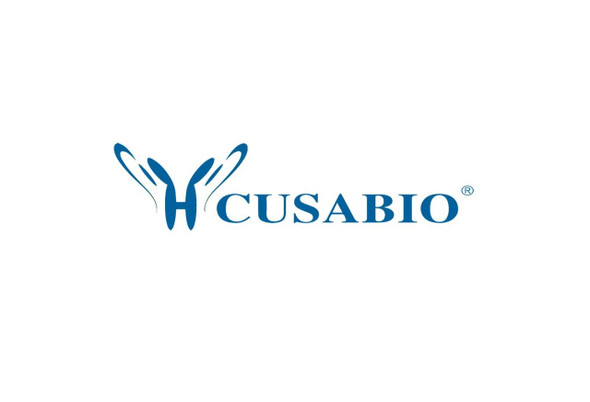Cusabio Virus & Bacteria Recombinants
Recombinant Lake Victoria marburgvirus Envelope glycoprotein (GP), partial | CSB-BP330440LBR
- SKU:
- CSB-BP330440LBR
- Availability:
- 28 - 38 Working Days
Description
Recombinant Lake Victoria marburgvirus Envelope glycoprotein (GP), partial | CSB-BP330440LBR | Cusabio
Alternative Name(s): GP1,2 (GP) (Virion spike glycoprotein)
Gene Names: GP
Research Areas: Signal Transduction
Organism: Lake Victoria marburgvirus (strain Popp-67) (MARV) (Marburg virus (strain West Germany/Popp/1967))
AA Sequence: SILWREGDMFPFLDGLINAPIDFDPVPNTKTIFDESSSSGASAEEDQHASPNISLTLSYFPNINENTAYSGENENDCDAELRIWSVQEDDLAAGLSWIPFFGPGIEGLYTAGLIKNQNNLVCRLRRLANQTAKSLELLLRVTTEERTFSLINRHAIDFLLTRWGGTCKVLGPDCCIGIEDLSRNISEQIDQIKKDEQKEGTGWGLGGKWWTSDWGVLTNLGILLLLSIAVLIALSCICRIFTKYIG
Source: Baculovirus
Tag Info: N-terminal 10xHis-tagged and C-terminal Myc-tagged
Expression Region: 436-681aa
Sequence Info: Partial
MW: 31.3 kDa
Purity: Greater than 85% as determined by SDS-PAGE.
Relevance: GP1 is responsible for binding to the receptor(s) on target cells. Interacts with CD209/DC-SIGN and CLEC4M/DC-SIGNR which act as cofactors for virus entry into the host cell. Binding to CD209 and CLEC4M, which are respectively found on dendritic cells, and on endothelial cells of liver sinusoids and lymph node sinuses, facilitate infection of macrophages and endothelial cells. These interactions not only facilitate virus cell entry, but also allow capture of viral particles by DCs and subsequent transmission to susceptible cells without DCs infection GP2 acts as a class I viral fusion protein. Under the current model, the protein has at least 3 conformational states: pre-fusion native state, pre-hairpin intermediate state, and post-fusion hairpin state. During viral and target cell membrane fusion, the coiled coil regions assume a trimer-of-hairpins structure, positioning the fusion peptide in close proximity to the C-terminal region of the ectodomain. The formation of this structure appears to drive apposition and subsequent fusion of viral and target cell membranes. Responsible for penetration of the virus into the cell cytoplasm by mediating the fusion of the membrane of the endocytosed virus particle with the endosomal membrane. Low pH in endosomes induces an irreversible conformational change in GP2, releasing the fusion hydrophobic peptide.
Reference: "Crystal structure of the Marburg virus GP2 core domain in its postfusion conformation." Koellhoffer J.F., Malashkevich V.N., Harrison J.S., Toro R., Bhosle R.C., Chandran K., Almo S.C., Lai J.R. Biochemistry 51:7665-7675(2012)
Storage: The shelf life is related to many factors, storage state, buffer ingredients, storage temperature and the stability of the protein itself. Generally, the shelf life of liquid form is 6 months at -20?/-80?. The shelf life of lyophilized form is 12 months at -20?/-80?.
Notes: Repeated freezing and thawing is not recommended. Store working aliquots at 4? for up to one week.
Function: GP1 is responsible for binding to the receptor(s) on target cells. Interacts with CD209/DC-SIGN and CLEC4M/DC-SIGNR which act as cofactors for virus entry into the host cell. Binding to CD209 and CLEC4M, which are respectively found on dendritic cells (DCs), and on endothelial cells of liver sinusoids and lymph node sinuses, facilitate infection of macrophages and endothelial cells. These interactions not only facilitate virus cell entry, but also allow capture of viral particles by DCs and subsequent transmission to susceptible cells without DCs infection (trans infection) (By similarity).
Involvement in disease:
Subcellular Location: GP2: Virion membrane, Single-pass type I membrane protein, Host cell membrane, Single-pass type I membrane protein, Note=In the cell, localizes to the plasma membrane lipid rafts, which probably represent the assembly and budding site, SUBCELLULAR LOCATION: GP1: Virion membrane, Peripheral membrane protein, Host cell membrane, Peripheral membrane protein
Protein Families: Filoviruses glycoprotein family
Tissue Specificity:
Paythway:
Form: Liquid or Lyophilized powder
Buffer: If the delivery form is liquid, the default storage buffer is Tris/PBS-based buffer, 5%-50% glycerol. If the delivery form is lyophilized powder, the buffer before lyophilization is Tris/PBS-based buffer, 6% Trehalose, pH 8.0.
Reconstitution: We recommend that this vial be briefly centrifuged prior to opening to bring the contents to the bottom. Please reconstitute protein in deionized sterile water to a concentration of 0.1-1.0 mg/mL.We recommend to add 5-50% of glycerol (final concentration) and aliquot for long-term storage at -20?/-80?. Our default final concentration of glycerol is 50%. Customers could use it as reference.
Uniprot ID: P35254
HGNC Database Link: N/A
UniGene Database Link: N/A
KEGG Database Link: N/A
STRING Database Link: N/A
OMIM Database Link: N/A









